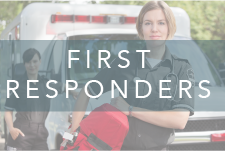What Are the 5 Stages of PTSD?
- Chateau Recovery
- May 27, 2021
- 4 min read
Updated: Oct 3, 2022
What Are the 5 Stages of PTSD? Post-traumatic stress disorder, or PTSD, is a debilitating disorder that impacts every facet of an individual’s life. PTSD can be divided into different stages of trauma — the five stages of PTSD.

Likewise, it is important to understand each of the individual stages to better develop a path towards healing, depending on one’s current state, and set expectations for each of the PTSD recovery stages.
Jump to:
Each of the five stages of trauma can present unique hurdles, whether an individual is just experiencing a traumatic event in the emergency phase or moving through the denial phase, intrusive phase, transition phase, or long-term recovery phase.
What Is Post-Traumatic Stress Disorder?
PTSD is an anxiety disorder that can manifest from experiencing or witnessing any number of harrowing, traumatic events. These things can be physically traumatic in nature, such as suffering from an injury, being in a car accident, experiencing a natural disaster, or being the victim of assault or sexual abuse.
However, PTSD can also be caused by other traumas that are more emotional trauma in nature, such as the death of a family member or loved one, or threats made on one’s own life, wellbeing, or the wellbeing of one’s family or loved ones. Any of these kinds of events can have a lasting impression on one’s mind and can change how a person views themselves or perceives the world around them, creating a framework that is dictated by these negative events and disasters.
The effects of these traumas can last a long time and can continue to introduce difficulties in accomplishing routine tasks for years if left unaddressed. However, that doesn’t mean an individual has to tackle all of their trauma at once, and instead can focus on their current stage of trauma.
The Stages of PTSD
Stage 1 – The Emergency Stage
The emergency phase of PTSD is the phase that is occurring in the moment of a traumatic event. The symptoms can manifest quickly in direct response to a currently ongoing traumatic event or directly and immediately after, such as during the event of a car crash, escaping a burning building, or while being engaged in a warzone or with an armed shooter. During this phase, anxiety can be incredibly high, and the brain will switch into “survival mode.” An individual may be reacting based on immediate instinct, which can trigger one’s “fight or flight” responses, as well as take immediate actions to ensure one’s own survival first and foremost.
However, these situations may not result in a person acting in the most rational way. Instead, the anxiety can further develop into panic, depending on the unique situation and the person involved.
Some of the symptoms that may be present at this phase of PTSD are:
Overwhelming fear
Feelings of powerlessness
Shock
Anxiety
Helplessness
Guilt
Depending on the event, this is also the time where medical attention may be necessary. Those who have suffered physical injury as a part of the traumatic event can further experience greater symptoms as well, on top of the mental and emotional toll that such traumatic experiences bring.
This phase can occur very suddenly and can last anywhere from a few minutes to a few hours after an event. During this time, it is important to find support and begin to ground oneself outside of the traumatic event, focusing on your breathing and immediate wellbeing following the situation. It is normal if a person has not yet fully understood or processed what has just happened and instead may focus on removing themselves from the area and securing their immediate safety, working to contact appropriate emergency responses as necessary.
Stage 2 – The Denial Stage
Stage 3 – The Intrusive Stage
Stage 4 – The Transition Stage
Stage 5 – Long-Term Recovery
Available PTSD Therapies and Treatments
Overcoming trauma and PTSD is a difficult and complicated task, but it is possible to build back a “normal” way of life, regardless of how helpless one may feel at any given moment.
Beginning with psychotherapy in either an individual or group setting, a person can begin to better understand their own symptoms by way of education and acknowledgment. This practice is intended to help each individual accept that they have experienced a traumatic event in their lives. This acceptance enables them to take the next step forward, all while personalizing their own coping strategies for daily use. Group therapy can be exceptionally helpful during the beginning of one’s PTSD recovery, as a person can share space with those who can objectively understand the nature of PTSD, working to create a tribe of kinship rather than leaving prevailing feelings of isolation to develop.
Medication-assisted therapies may also be pertinent, depending on the individual and the PTSD symptoms they may suffer from. Being able to alleviate some of the symptoms of anxiety, depression, or helping an individual get enough sleep each night are all crucial for being able to develop other coping strategies. While medication is not a replacement for other therapeutic practices, it can enable an individual to focus more of their energy on developing new coping strategies, strengthening relationships, or working on their self-care routines instead of constantly feeling the mental and emotional exhaustion that comes with constantly battling symptoms of PTSD. EMDR, or Eye-Movement Desensitization and Reprocessing, can also help alleviate some of these stresses and may be used to help an individual cope with their daily anxieties.

Finding ways to validate one’s emotions is also paramount for healthy, prolonged recovery. Having a time of remembrance regarding certain traumas can help an individual legitimize their feelings to themselves, all while providing a safe space to mourn. This can especially help those who were victims of shooting events, natural disasters, or were involved in warzones.
Expressing one’s emotions is also of great importance and is the key part of movement out of the denial stage of PTSD recovery. Art therapy, music therapy, and physical-based therapies such as sport, dance, or outdoor recreational activities can all provide unique ways for an individual to express themselves in ways that don’t necessarily rely on words or demand that you find a way to simplify complex emotions for conversation.




